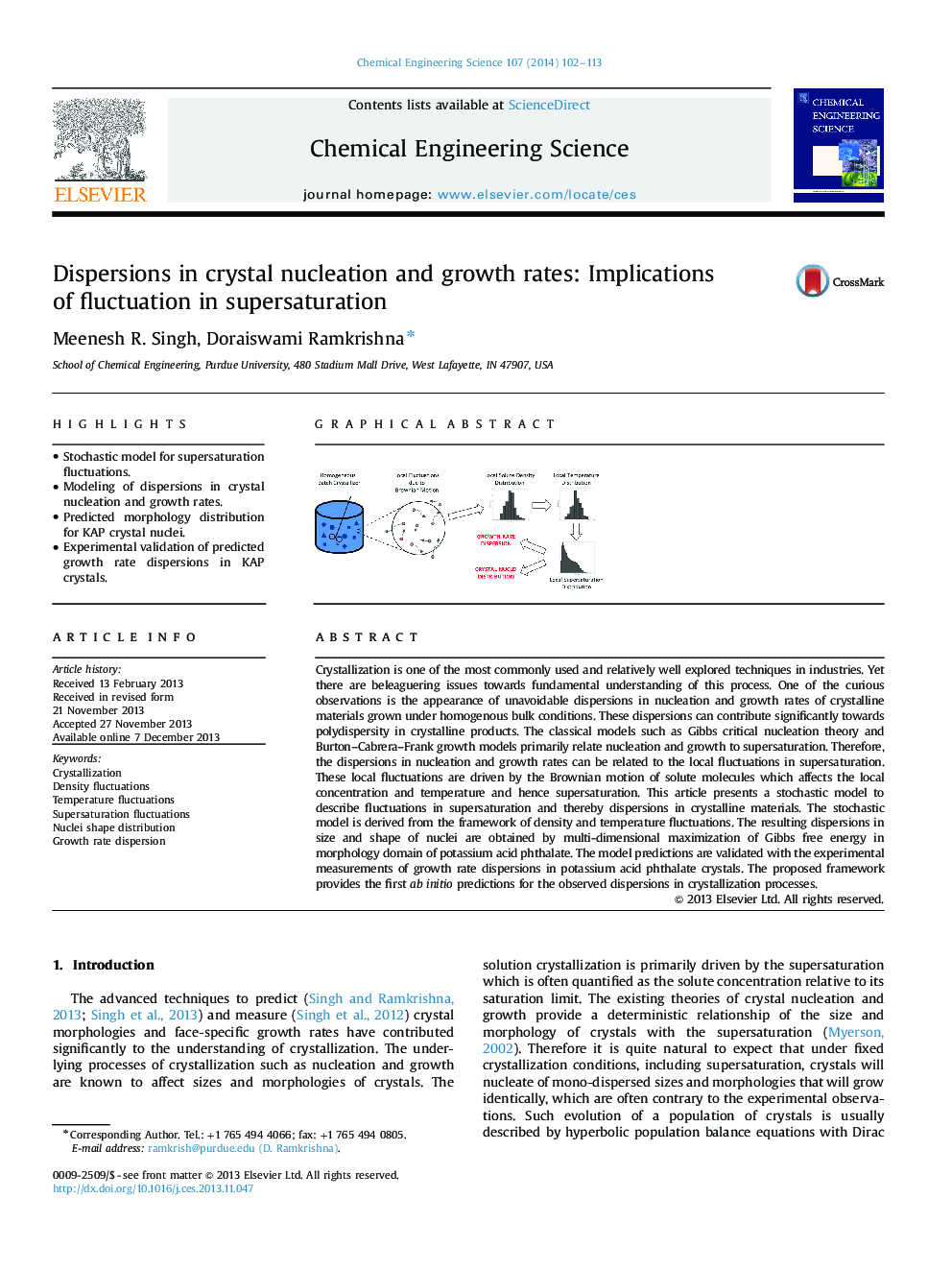| Article ID | Journal | Published Year | Pages | File Type |
|---|---|---|---|---|
| 154948 | Chemical Engineering Science | 2014 | 12 Pages |
•Stochastic model for supersaturation fluctuations.•Modeling of dispersions in crystal nucleation and growth rates.•Predicted morphology distribution for KAP crystal nuclei.•Experimental validation of predicted growth rate dispersions in KAP crystals.
Crystallization is one of the most commonly used and relatively well explored techniques in industries. Yet there are beleaguering issues towards fundamental understanding of this process. One of the curious observations is the appearance of unavoidable dispersions in nucleation and growth rates of crystalline materials grown under homogenous bulk conditions. These dispersions can contribute significantly towards polydispersity in crystalline products. The classical models such as Gibbs critical nucleation theory and Burton–Cabrera–Frank growth models primarily relate nucleation and growth to supersaturation. Therefore, the dispersions in nucleation and growth rates can be related to the local fluctuations in supersaturation. These local fluctuations are driven by the Brownian motion of solute molecules which affects the local concentration and temperature and hence supersaturation. This article presents a stochastic model to describe fluctuations in supersaturation and thereby dispersions in crystalline materials. The stochastic model is derived from the framework of density and temperature fluctuations. The resulting dispersions in size and shape of nuclei are obtained by multi-dimensional maximization of Gibbs free energy in morphology domain of potassium acid phthalate. The model predictions are validated with the experimental measurements of growth rate dispersions in potassium acid phthalate crystals. The proposed framework provides the first ab initio predictions for the observed dispersions in crystallization processes.
Graphical abstractFigure optionsDownload full-size imageDownload high-quality image (182 K)Download as PowerPoint slide
